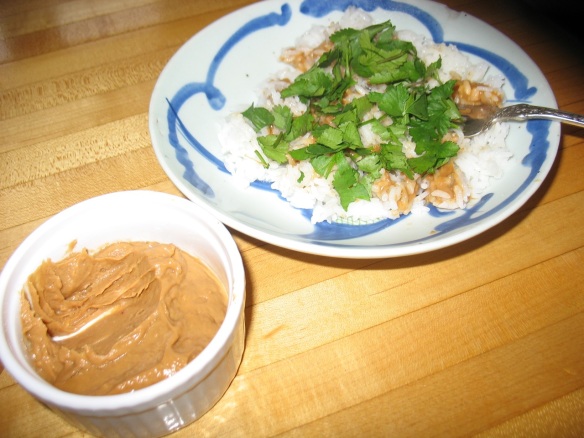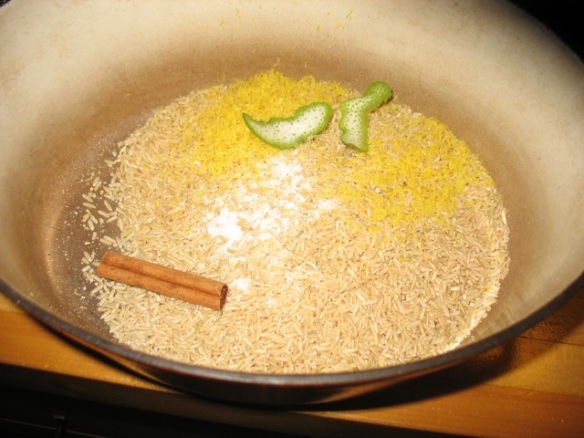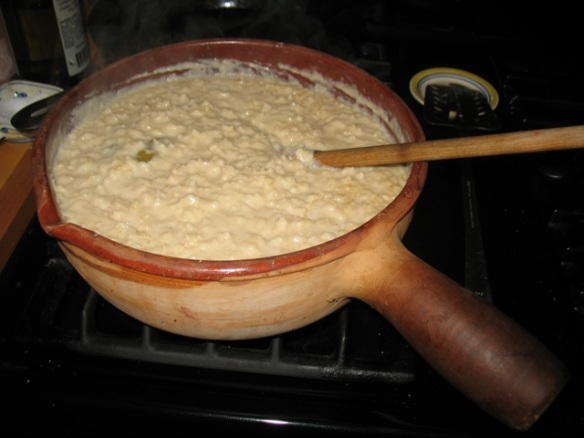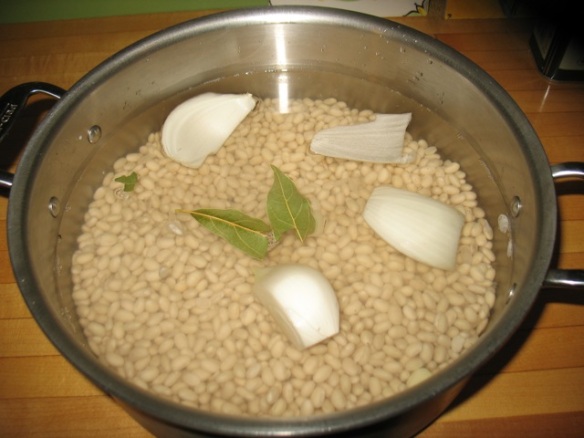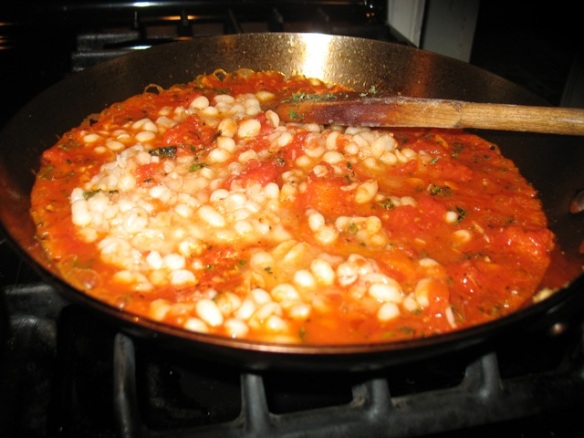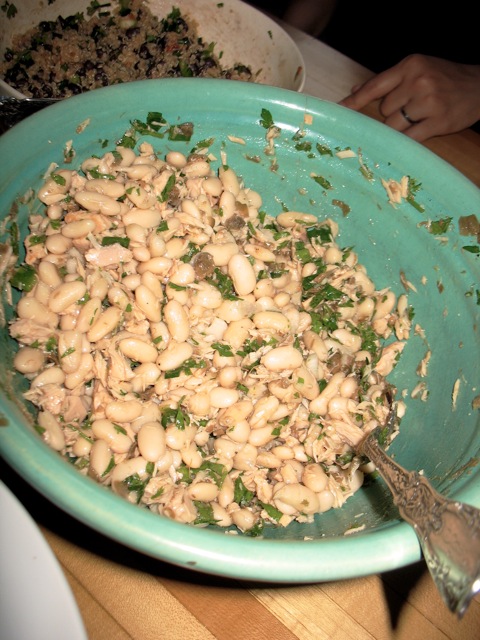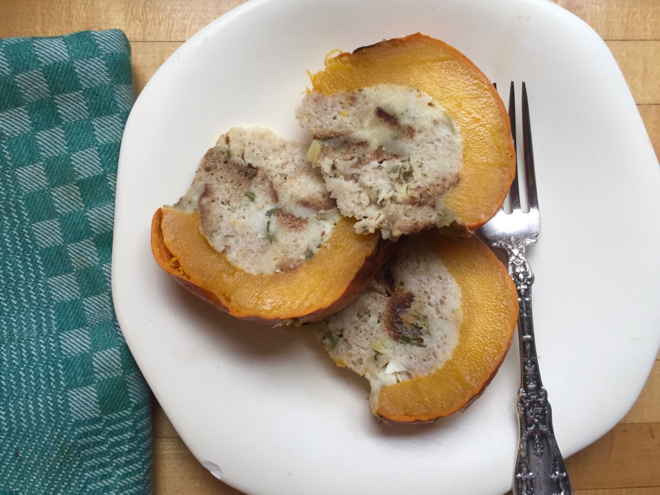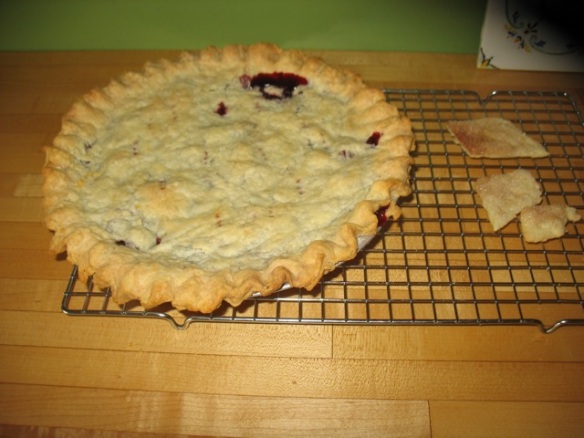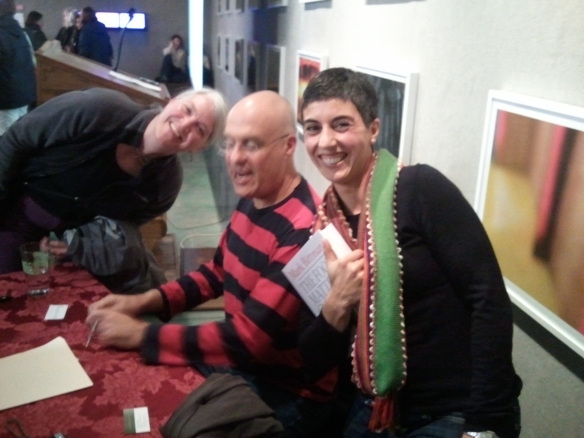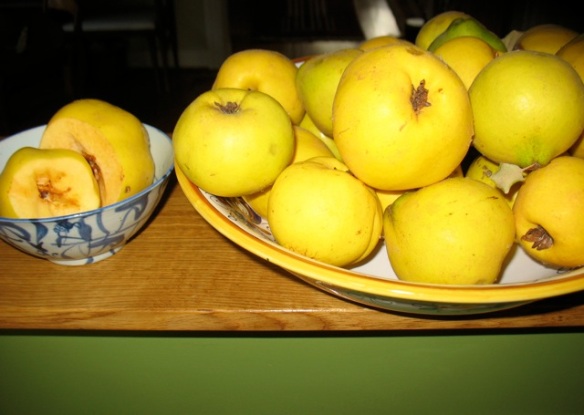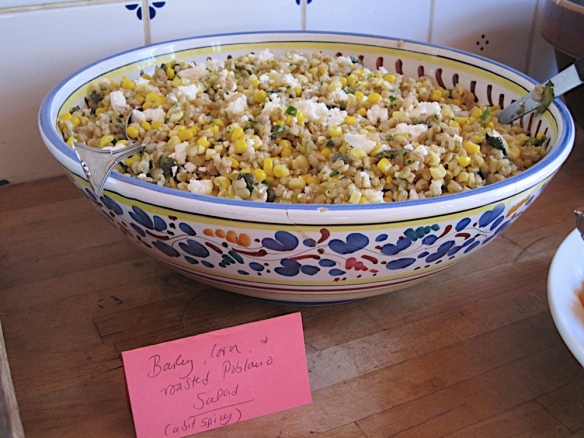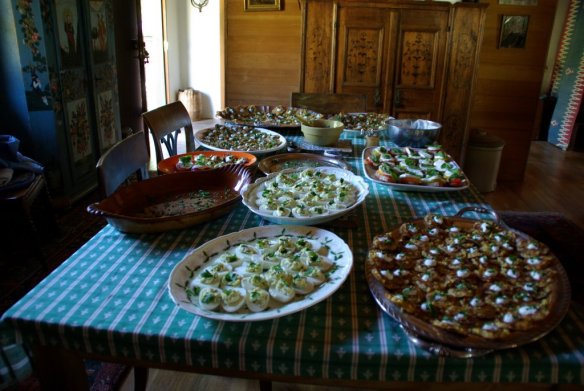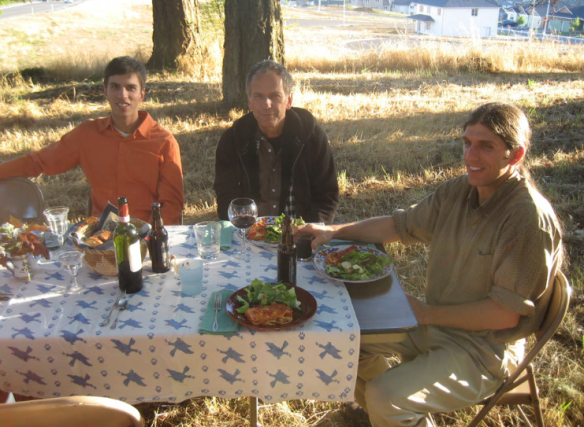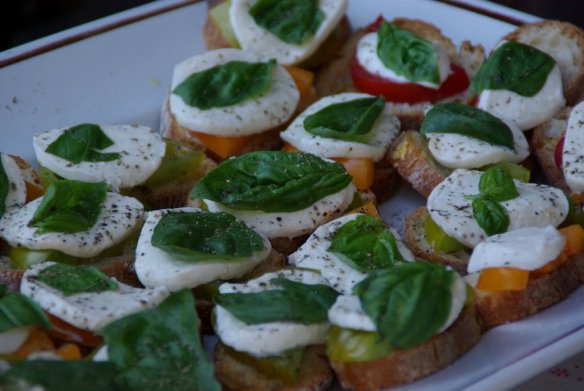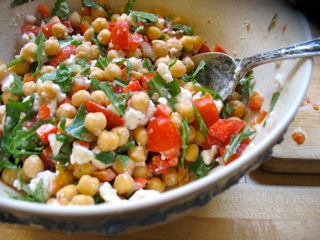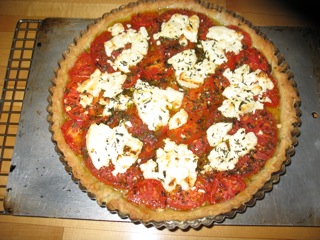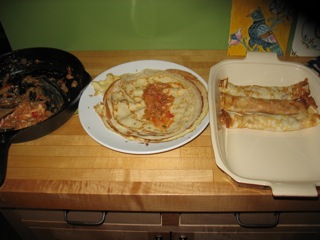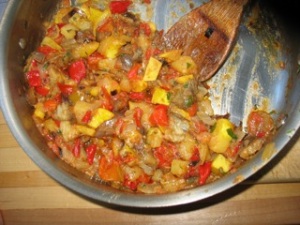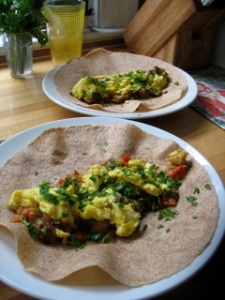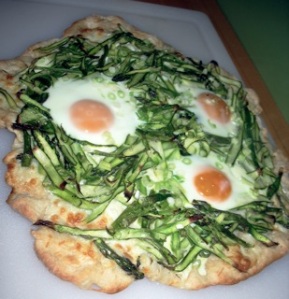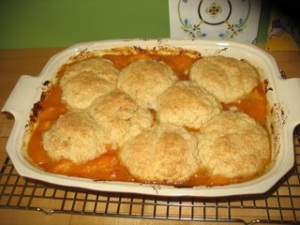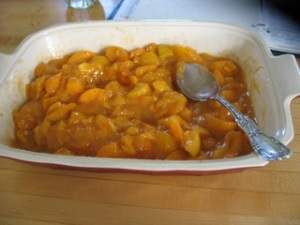I have at least five different blog posts started in my head. These last few spring-like days here in Portland have been so energizing and glorious maybe that’s translated into increased brain activity. So I’d love to muse about all the birds I hear singing all of sudden every morning or the green garlic stalks that seem to have sped up their growth a bit or the late afternoon light or that wonderful springy, damp earth sort of smell. I’d also like to write about the talk I’m putting together to give at Slow Food Portland’s Annual Potluck this Sunday (there are still seats available and it is likely the best potluck in Portland and some of the most relevant content) I’d also like to write about several totally last-minute cook-with-what-you-have meals I’ve tossed together lately. So I think I’ll do the latter and focus on just one.
The other day I was in need of a quick hearty meal for our family. I had leftover black bean soup in the fridge so I cooked a pot of white rice (I was in a hurry and I love white rice but tend to cook brown rice more frequently these days) to make the soup stretch. As I was heating up the soup I realized that this was going to be just one-too-many bean meals in a row for my husband. I’ve been doing a lot of recipe testing with beans lately and as much as my dear husband likes most of them I know he doesn’t love them quite as a much as I do.
I rummaged through the fridge in search of some other quick inspiration for him and there was a little dish of leftover peanut sauce I had forgotten about. Then I remembered a blog post I had recently read by one of my favorite bloggers (David Lebovitz). Although primarily a baker he sometimes writes about savory foods and had posted a recipe for peanut sauce (that I have not tried) and talked about how he used to just dollop it on white rice for a quick meal on the go when he was still working in restaurants. So there it was: I had my hot rice, my little dish of peanut sauce and plenty of cilantro. So that’s what Brian got for lunch and he was very happy. I ate the bean soup AND a bowl of rice like his and had to agree that the latter was more fun! The hot rice loosened up the peanut sauce and brought out the flavors of lime and chili and the cilantro was cooling and lively. It hit the spot.
So, if you make the below recipe for peanut sauce you should plan to use three-quarters of it to toss with some spaghetti or rice noodles and some finely sliced raw veggies and save the remainder for the above dish!
I have come to love this particular peanut sauce that I came across on another food blog I follow–Skillet Chronicles–by Aleta Watson.
Thanks all you fellow bloggers for the constant inspiration!
Peanut Sauce
–only slightly adapted from Skillet Chronicles
generous ½ cup smooth peanut butter
2 tablespoons toasted sesame oil
2 tablespoons soy sauce
1 tablespoon grated ginger
4 garlic cloves, pressed or minced to a paste
3 tablespoons fresh lime juice
½-1 teaspoon chili flakes or hot chili sauce (to taste)
1 tablespoon rice vinegar
1 tablespoon brown sugar
2 tablespoons hot water
Blend all the sauce ingredients together in a small bowl until smooth and set aside. Toss with cold noodles and veggies or serve with rice or use as a dip for steamed veggies or roasted meat. This sauce keeps very well in the fridge for a week, tightly covered (or your fridge will smell like garlic and peanut butter and sesame oil!)
Happy Cooking and Eating!
